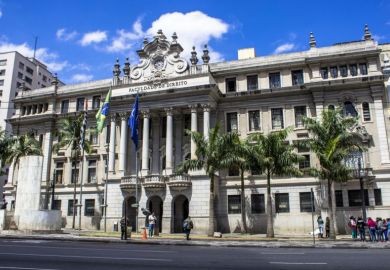Browse the full Impact Rankings 2022 results
Hokkaido University was established in 1876 as Sapporo Agricultural College, the first modern university in Japan. Its purpose was to develop agricultural production technologies in cold regions – which were necessary to turn Hokkaido, the northernmost region of the country, into a major food production centre – and to foster human resources to put these technologies into practice. To this end, the Japanese government of the time appointed William Smith Clark, then president of Massachusetts Agricultural College in the US, as vice-principal of the college.
The university has developed into one of the largest in Japan, covering almost all disciplines including natural and social sciences as well as humanities. It possesses a wide variety of research facilities throughout Hokkaido, including experimental farms and ranches, extensive research forests, training ships, and aquatic research stations. With a total area of about 70,000 hectares, the research forests are among the largest in the world.
With this rich educational and research environment, and the abundant nature of Hokkaido as a backdrop, the university has become prominent in field research related to agriculture, forestry, fisheries and environmental sciences. The “Clark spirit” of independence and self-reliance has not faded in the 145 years since the university was founded; it continues to live on in all members of the university through the four basic principles of “frontier spirit”, “global perspectives”, “all-round education” and “practical learning”. Hokkaido University’s mission has been to build a sustainable society through the resolution of local issues right from its establishment.
With this background, Hokkaido University has implemented many initiatives that contribute to achieving the United Nations’ Sustainable Development Goals (SDGs). In particular, efforts toward SDG 2 (zero hunger) are the most fundamental area of the university, because it started as an agricultural college. The Global Center for Food, Land, and Water Resources conducts cutting-edge research on securing sustainable food, water, and land resources, and sends students to research institutions and international organisations with the aim of nurturing future leaders with broad perspectives.
Various efforts toward SDG 2 are also being made at the Research and Education Center for Robust Agriculture, Forestry and Fisheries Industry, known as the "Robust Center". The Robust Center aims to make the food value chain more robust by incorporating the concept of industrial engineering into agriculture, forestry and fisheries. Improving productivity and profitability of these industries, developing and implementing next-generation technologies, and fostering the next-generation professionals are also missions of the centre. Moreover, it works with local businesses on projects to solve various problems and actively organises science and technology workshops and conferences on the application of technology in fisheries and agriculture.
The spirit of independence has taken root among our students. They independently organise “Hokkaido University Marché” – an annual event that connects Hokkaido residents with agriculture producers from all over the region, enabling producers and consumers to interact directly. Students also actively participate in the Hult Prize, an SDG-oriented global entrepreneurship competition; one of the Hokkaido teams was selected as a regional representative.
Hokkaido University is an early adopter of the concept of sustainability. In 1996, it became the first national university in Japan to adopt a “Campus Master Plan”, which aimed to maintain various historical and cultural assets and the rich ecological environment on campus. In 2005, a headquarters was established to evolve the concept of sustainable development into a university strategy, and in August 2021, a new organisation, the Institute for the Advancement of Sustainability, headed by the university’s president, was established to further advance efforts towards the SDGs.
The tutelage that Hokkaido University received from Professor Clark 145 years ago has flourished, and the university has now been highly rated in the prestigious Times Higher Education Impact Rankings 2022. Times change, challenges change, but we are still halfway to a sustainable society. Hokkaido University will remain at the forefront of building a new society, hand in hand with the rest of the world, and will continue to strive to be a university that contributes to the world’s efforts towards achieving the SDGs.
Atsushi Yokota is executive vice-president of international affairs and the SDGs at Hokkaido University.
Register to continue
Why register?
- Registration is free and only takes a moment
- Once registered, you can read 3 articles a month
- Sign up for our newsletter
Subscribe
Or subscribe for unlimited access to:
- Unlimited access to news, views, insights & reviews
- Digital editions
- Digital access to THE’s university and college rankings analysis
Already registered or a current subscriber?









